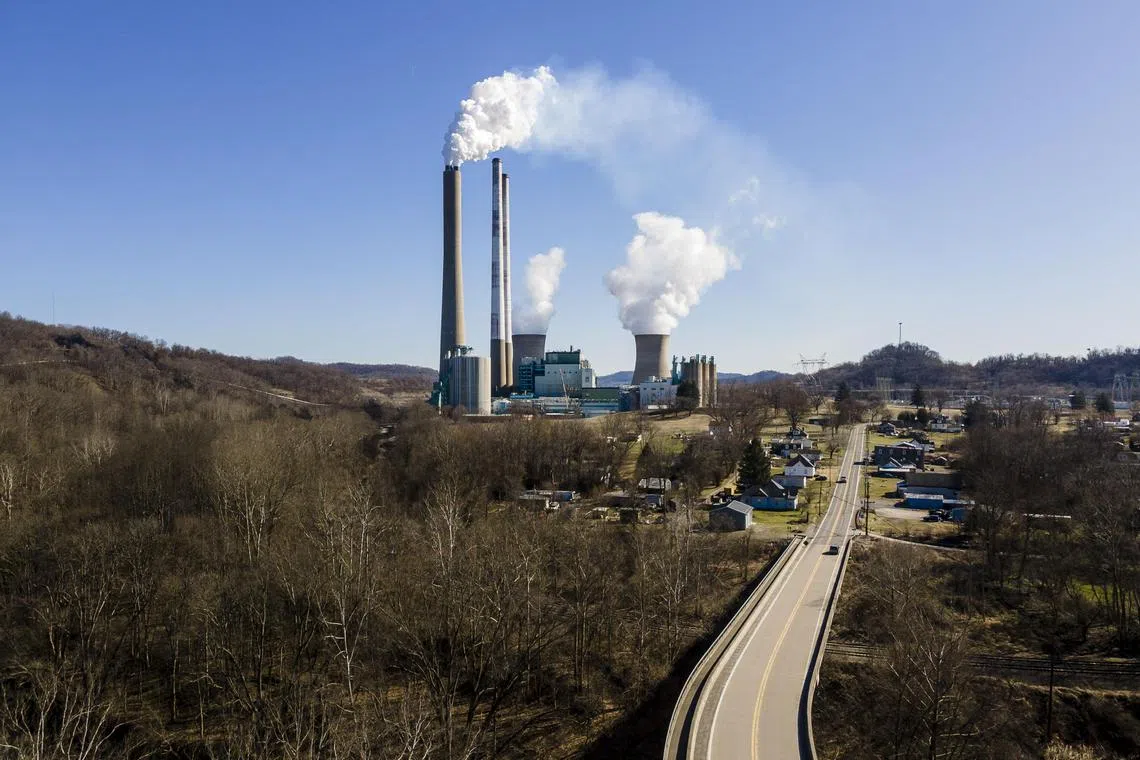Trump vows to authorise coal-fired power to counter China
Sign up now: Get ST's newsletters delivered to your inbox

Coal accounts for about 15 per cent of power generation in the US, down from more than 50 per cent in 2000.
PHOTO: EPA-EFE
Follow topic:
WASHINGTON – US President Donald Trump said he would look to counter China’s economic advantage from coal-based electricity by authorising his administration to ramp up production of power from the fossil fuel.
“I am authorising my Administration to immediately begin producing Energy with BEAUTIFUL, CLEAN COAL,” he wrote in a social media post.
It was not clear what he was referring to or how his social media decree would affect US policy.
He has already signed an executive order declaring a national energy emergency and directed the Environmental Protection Agency (EPA) to boost fossil fuel production and distribution.
Coal accounts for about 15 per cent of power generation in the US, down from more than 50 per cent in 2000, according to the US Energy Information Administration.
The decline of coal-based power in the US has been stoked by competition from renewable alternatives and cheap natural gas, in addition to federal regulations that have raised its operational costs.
Still, Mr Trump could tap emergency powers to revitalise coal-fired electricity, repeating manoeuvres from his first term, when officials drew up plans to order grid operators to buy electricity from struggling coal and nuclear plants in an effort to extend their life.
Interior Secretary Doug Burgum told Bloomberg Television last week the administration was considering using emergency powers to bring back coal-fired plants that have closed and stop others from shutting.
Earlier in March, Energy Secretary Chris Wright had said the administration was working on a “market-based” plan to stem the closing of US coal-fired power plants.
An additional 120 coal-fired power plants are scheduled to shut down in the next five years in part because of environmental regulations that have made them uneconomic, according to the America’s Power trade group that represents utilities and miners such as Peabody Energy Corp and Core Natural Resources Inc.
The EPA had said it planned to revisit regulations limiting mercury and greenhouse gas pollution, which could help lower operational costs for coal plants, prolonging their life.
Supporters of those requirements have emphasised the need to curb pollution, including soot, a fine particle that can penetrate the bloodstream, raising risks of cardiovascular and respiratory problems.
The metal mercury is converted in soil and water into a neurotoxin that can lower IQ, damage the nervous system and lead to heart attacks.
The Trump officials and coal-power advocates have argued that keeping the plants online could help lower energy costs and supply energy to power-thirsty data centres and for artificial intelligence.
China has relied on coal-fired power to increase manufacturing of an array of goods – including solar panels, critical minerals and semiconductors – and drive the country’s economic expansion, helping to make it the world’s No. 1 emitter of the greenhouse gases fuelling global warming.
Even as the country’s annual gross domestic product, in current US dollars, jumped from about US$361 billion in 1990 to around US$14.7 trillion (S$19.6 trillion) by 2020, China’s coal consumption quadrupled and carbon dioxide emissions more than tripled.
China’s use of cheap coal power to fuel manufacturing has spurred bipartisan concern in the US, where officials have fretted that Beijing’s growing dominance in producing clean-energy tech and other goods imperils jobs in the US.
Even so, China has engaged in record-setting installation of solar and wind power infrastructure, and it has pledged to peak its overall emissions before the end of the decade. BLOOMBERG

